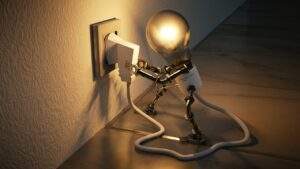The Art of Fireplace Maintenance: Preserving Warmth and Safety at Home

Key Takeaways:
- Understanding the unique maintenance requirements for different fireplace types is essential for safety and efficiency.
- Regular upkeep, including chimney inspection and cleaning of various fireplace components, helps prevent common issues.
- While homeowners can manage some aspects of fireplace maintenance, seeking professional services is essential.
Table of Contents:
- Introduction to Fireplace Maintenance
- Understanding Your Fireplace Type
- The Basics of Wood-Burning Fireplace Care
- Keeping a Gas Fireplace in Top Condition
- Electric Fireplace: Ease of Maintenance
- Seasonal Fireplace Preparation Steps
- Safety Measures During Fireplace Use
- Enhancing Your Fireplace’s Efficiency
- Recognizing Common Fireplace Issues
- DIY Maintenance Tips and Tricks
- Conclusion and Importance of Professional Assistance
Introduction to Fireplace Maintenance
A fireplace is more than a charming addition to your home; it’s a functional piece requiring diligent care to maintain its allure and operational safety. Regular maintenance brings out the best in your fireplace and prevents potential hazards. Whether it’s an elegant, traditional wood-burning hearth or a modern, convenient gas or electric unit, each has its upkeep nuances. From beating back the brisk Seattle weather with the installation of a cozy hearth to ensuring your fixture’s longevity, understanding the elements of fireplace installation in Seattle is the first step to responsible fireplace ownership.
Understanding Your Fireplace Type
The journey towards ensuring your fireplace stays in top condition commences by recognizing the type of unit you have, be it wood, gas, or electric. Each category, including those shared in fireplace installation Seattle, comes with distinct maintenance instructions suited to its unique design. A wood-burning model exudes traditional warmth and necessitates particular attention to combustibles and ventilation. In contrast, gas fireplaces offer streamlined user experiences requiring less day-to-day maintenance yet stricter adherence to safety protocols due to the inherent use of natural gas. Electric fireplaces, gaining in popularity due to their zero-emissions profile, involve the least complex routines but benefit from regular attention. This Old House is an esteemed resource for discerning fireplace owners who intend to delve deeper into the particulars of their fireplace’s technology and corresponding upkeep requirements.
The Basics of Wood-Burning Fireplace Care
Classic wood-burning fireplaces are sought for their robust flames and the quintessential crackle of burning logs. However, these fixtures present unique maintenance challenges, the most paramount of which is the handling of creosote—a byproduct of wood combustion that accumulates inside your chimney and poses a significant fire risk if left unchecked. Frequent cleaning is vital to managing creosote levels, with specialized brushes and vacuums often employed to ensure comprehensive care of the chimney and firebox. Another critical aspect involves examining the structural integrity, as heat and exposure to elements over time can cause masonry to deteriorate, highlighting cracks that could impair performance and safety. Vigilance and a proactive approach to these components underscore the criticality of wood-burning fireplace maintenance.
Keeping a Gas Fireplace in Top Condition
Gas fireplaces are renowned for their ease of use and cleaner burn compared to wood variants, but they still need their specific maintenance demands. The principal concern for gas units is the integrity of the gas supply and expulsion systems. Even a minuscule gas leak can pose substantial danger, and proper ventilation is essential to prevent the accumulation of harmful byproducts. Professional inspections are indispensable, as experts are adept at identifying and rectifying issues that are only sometimes evident to the untrained eye. Regular examination of ignition systems and the status of the venting structure can form part of a routine that not only optimizes the conditions for safe fireplace operation but also fortifies the system’s reliability over time.
Electric Fireplace: Ease of Maintenance
Electric fireplaces offer the dual benefits of hassle-free operation and minimal routine maintenance. Without chimney sweeping or fuel storage, these units appeal to homeowners looking for ease and convenience. Nevertheless, more consistent cleaning practices and occasional inspections of the heating elements and fan are needed. Maintenance typically involves keeping the components clean from dust, which can accumulate and affect performance. It’s imperative to follow manufacturer guidelines regarding servicing to maintain integrity and prolong the unit’s life.
Seasonal Fireplace Preparation Steps
Your fireplace’s efficiency and safety can be significantly influenced by weather changes, making seasonal maintenance a significant aspect of home care. Before the onset of winter, a thorough check is recommended to ensure your system is primed for extensive use during the cold months. Tasks could range from inspections of the chimney cap to prevent water intrusion to evaluating the condition of the hearth itself for any wear that could impact functionality. Conversely, during the warmer months when the fireplace lies dormant, proactive measures such as a damper check—ensuring it’s securely closed—can stave off energy losses and protect the unit from the ingress of outdoor elements.
Safety Measures During Fireplace Use
The most critical element of fireplace maintenance doesn’t pertain to the unit itself but to the measures taken to ensure safe usage. An integral component of this is providing the fireplace is well-vented. Proper venting is synonymous with safety, as it directly impacts the air quality within your home when the fireplace is in use. Implementing the correct fuel choice is another pivotal consideration; deviation from recommended fuels can lead to inefficiency and potential hazards. These decisions significantly influence your fireplace’s overall safety and require continuous attention.
Enhancing Your Fireplace’s Efficiency
An optimally maintained fireplace is not only safe but also efficient. Various enhancements like glass doors can prevent heat loss, while heat-resistant metals employed in blowers or grates can increase warmth distribution throughout your living space. Such upgrades can reduce heating costs, rendering maintenance an investment in your home’s comfort and economy. Recognizing that each improvement affects performance, owners can judiciously choose enhancements that align best with their fireplace use and efficiency objectives.
Recognizing Common Fireplace Issues
Being attentive to your fireplace’s operational nuances allows for the early detection of irregularities that could degenerate into problematic issues. Unusual odors, smoke spillage into the room, and lighting difficulties are all indicators that should prompt further investigation and potentially professional attention. These common issues often have simple solutions if caught early, yet can escalate into more severe situations without proper care. Part of responsible fireplace stewardship is understanding what constitutes regular operation versus a symptom of a more significant issue.
DIY Maintenance Tips and Tricks
Many maintenance actions can be performed without professional aid from the handy homeowner. These DIY tasks, such as ash removal and gasket checks, can maintain your fireplace’s cleanliness and ensure minor issues do not become exacerbated. It’s crucial, however, to recognize the scope of DIY capabilities—more technical endeavors, particularly about gas and electrical components, should be left to professionals to avert accidental damage or personal hazard.
Conclusion and Importance of Professional Assistance
In conclusion, while many maintenance tasks can feasibly fall within your DIY repertoire, wood-burning and gas fireplace care rigors often necessitate a professional’s touch. The foundation of good fireplace ownership is creating and following an extensive maintenance schedule that includes expert cleanings and inspections. By visiting the Chimney Safety Institute of America, homeowners can further educate themselves on the gravity of chimney care, reinforcing the investment’s value in safety, performance, and peace of mind.







